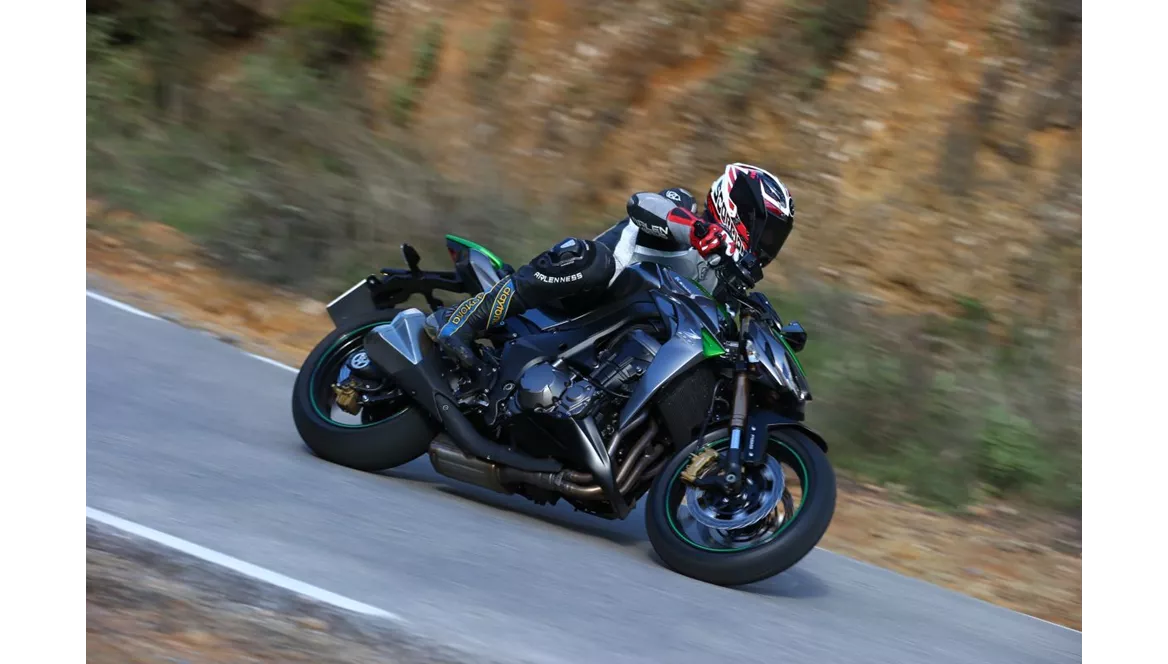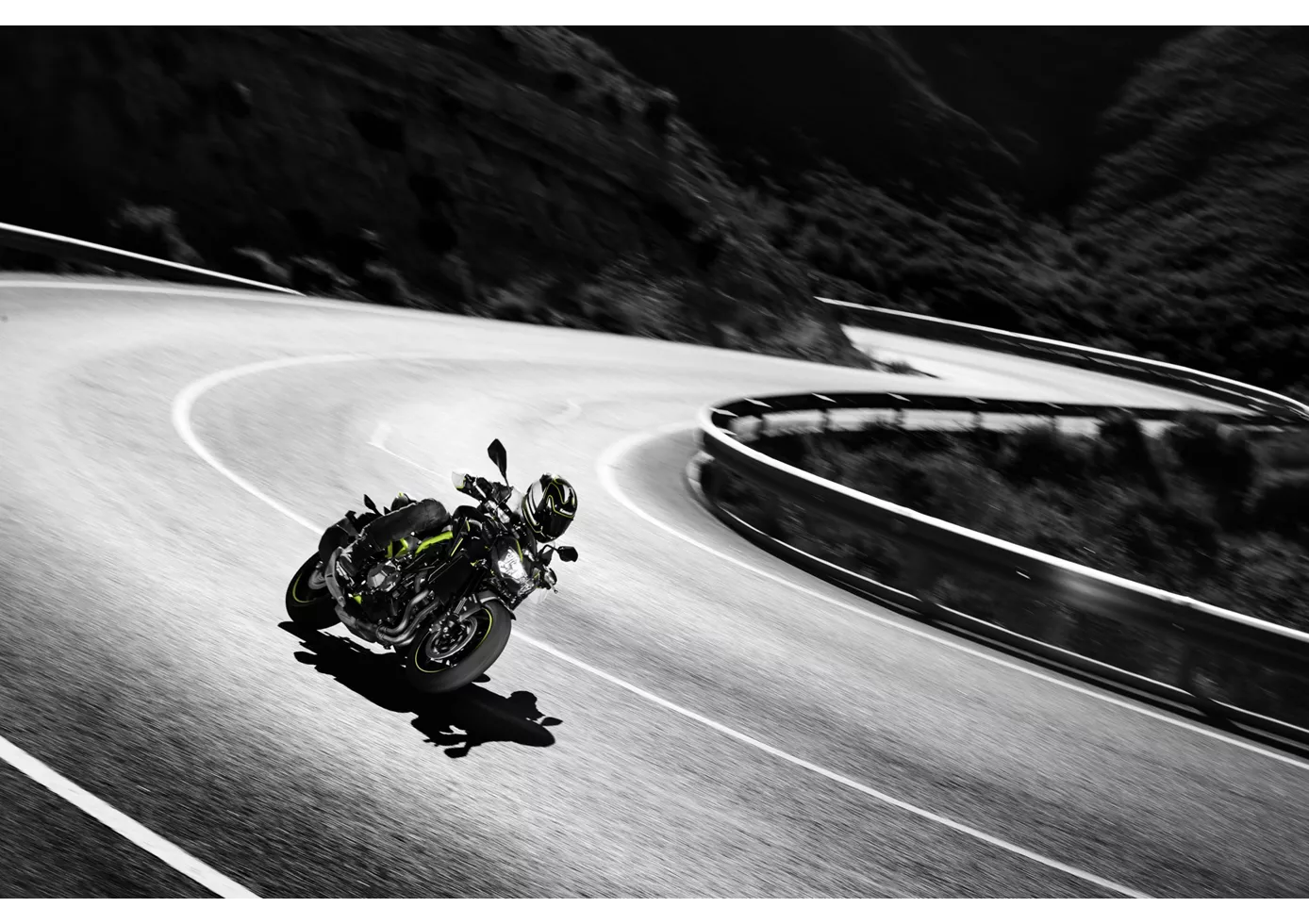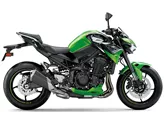Kawasaki Z1000 2014 vs. Kawasaki Z900 2018

Kawasaki Z1000 2014

Kawasaki Z900 2018
Visão geral - Kawasaki Z1000 2014 vs Kawasaki Z900 2018
The Kawasaki Z1000 model year 2014 and the Kawasaki Z900 model year 2018 are both naked bikes from Kawasaki, designed for sporty riding experiences. While they share some similarities in terms of engine type, number of cylinders, and cooling system, there are also notable differences between the two models.
Starting with the engine specifications, the Kawasaki Z1000 2014 is equipped with an inline-four engine that delivers a power output of 142 horsepower and a torque of 111 Nm. On the other hand, the Kawasaki Z900 2018 also features an inline-four engine but with a slightly lower power output of 125.4 horsepower and torque of 98.6 Nm. Despite the lower power output, the Z900 is praised for its smooth and powerful engine performance.
In terms of suspension, both bikes feature a telescopic fork at the front. However, the Z1000 2014 offers adjustable settings for compression, preload, and rebound, while the Z900 2018 only provides adjustment options for preload and rebound. This gives the Z1000 an advantage in terms of customization and fine-tuning of the suspension.

Kawasaki Z1000 2014
When it comes to the chassis, the Z1000 2014 has an aluminum frame, while the Z900 2018 utilizes a steel frame. The aluminum frame of the Z1000 provides a lightweight and rigid structure, contributing to its excellent handling characteristics. On the other hand, the steel frame of the Z900 offers durability and stability.
Both bikes are equipped with dual disc brakes at the front, featuring four-piston calipers and petal technology. This ensures efficient braking performance for both models. The Z900, however, has a narrower front tire width of 120mm compared to the Z1000's 180mm, which may affect the bike's stability and grip.
In terms of dimensions, the Z1000 2014 has a shorter wheelbase of 1435mm compared to the Z900 2018's 1450mm. This slightly shorter wheelbase of the Z1000 may contribute to its agility and maneuverability. Additionally, the Z1000 has a higher seat height of 815mm compared to the Z900's lower seat height of 795mm.

Kawasaki Z900 2018
Now, let's discuss the strengths and weaknesses of each model. The Kawasaki Z1000 2014 is praised for its sophisticated design, extremely pleasant handling, pleasant sound, and good brakes. However, its main weakness is its high purchase price compared to its competitors, such as the S1000R.
On the other hand, the Kawasaki Z900 2018 is highlighted for its powerful and smooth engine performance, excellent sound, elegant and sporty appearance, low seating position, and easy handling and maneuverability. However, it lacks traction control, which may be a drawback for some riders, and the knee angle may become tiring for tall riders over long periods of time.
In conclusion, both the Kawasaki Z1000 2014 and the Kawasaki Z900 2018 are impressive naked bikes with their own unique strengths and weaknesses. The Z1000 offers a more customizable suspension and a higher seat height, while the Z900 provides a powerful engine, lower seat height, and an elegant design. Ultimately, the choice between the two models depends on the rider's preferences and priorities.
Especificações técnicas Kawasaki Z1000 2014 em comparação com Kawasaki Z900 2018
Prós e contras em comparação
Prós e contras em comparação
Kawasaki Z1000 2014

A Kawasaki Z1000 (2014) é uma afirmação contra a tendência eletrónica do seu tempo - e é exatamente isso que a torna especial hoje em dia. O seu caraterístico motor de quatro cilindros, a sua mecânica direta e o seu enfoque intransigente no essencial são um acorde numa época em que muitas motos se tornaram computadores. Sim, não tem os modernos Sistemas Avançados de Assistência ao Condutor e uma proteção perfeita contra o vento. Mas oferece uma experiência de condução autêntica de uma naked bike, aliada à fiabilidade japonesa e a custos de manutenção razoáveis. A Z1000 não é uma moto para viciados em folhas de dados ou fãs de eletrónica - é uma moto para pessoas que ainda querem tomar as suas próprias decisões quando conduzem. Uma moto honesta e com carácter que continua a inspirar mesmo após anos e que cumpre o seu papel como alternativa emocional à era moderna digital.
Kawasaki Z900 2018

No disputadíssimo segmento das motos naked, a Z900 joga mesmo na frente. Acima de tudo, o seu motor é absolutamente fantástico, funciona de forma incrivelmente sedosa e oferece uma potência rica em todas as rotações - como convém a um quatro cilindros japonês. O seu aspeto desportivo e agressivo corresponde a isto. Não necessita de sinos e assobios electrónicos, mas ainda assim transmite muita confiança quando segue as curvas, trava e acelera. O assento baixo é especialmente benéfico para os condutores mais pequenos, mas os condutores mais altos podem sentir falta de um ângulo de joelho mais plano em longas distâncias. O baixo peso e a compacidade tornam a Z900 particularmente ágil e fácil de manusear. Um canhão desportivo que também é extremamente apelativo em termos de preço
Comparação de preços Preço médio de mercado Kawasaki Z1000 vs Kawasaki Z900
There are a few key differences between a Kawasaki Z1000 2014 and a Kawasaki Z900 2018. In terms of price, the actual average price of a Kawasaki Z1000 2014 is about 4% higher. A Kawasaki Z1000 2014 experiences a loss of 810 EUR in one year and 610 EUR in two years of ownership. This is offset by a loss of 790 EUR and 650 EUR for a Kawasaki Z900 2018. Compared to Kawasaki Z900 2018 there are less Kawasaki Z1000 2014 bikes available on the 1000PS.de Marketplace, specifically 12 compared to 55. It takes less time to sell a Kawasaki Z1000 with 75 days compared to 112 days for a Kawasaki Z900. Since model year 2005 1000PS.de editors have written 41 reviews for the Kawasaki Z1000 and 46 reviews for the Kawasaki Z900 since model year 2017. The first review for the Kawasaki Z1000 was published on 02/09/2002 and now has more than 5 800 views. This compares to more than 93 200 views for the first review on Kawasaki Z900 published on 11/11/2016.

















